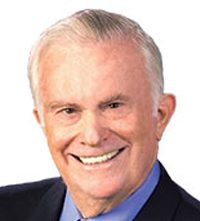Less Reading, More TV-Watching
Political and influential sectors will be increasingly dominated by television.

According to reported research, books are rapidly disappearing as a source of reading pleasure as well as in-depth information on a great variety of subjects.
These specific sector research sources claim that one-in-four adults haven’t picked up a book — paper or electronic — in the past year. It’s worse among the working class than those with time on their hands. A full 44 percent of adults with a high school diploma or less indicate they have not read a book in the past year. Similarly, households with incomes of $30,000 or less (36 percent) were more likely than households earning $75,000 or more (14 percent) not to have read a book in the past year.
Behind this is a trend that fewer people are reading for pleasure. Since 2004, the number of active readers has dropped by more than 30 percent, according to the “American Time Use Survey,” conducted by the Bureau of Labor Statistics.
According to the numbers, the men reading for pleasure dropped from 25 percent in 2004 to 15 percent in 2017. Among women, the number dropped from 31 percent to 22 percent. Not surprisingly, books are not given up for other meaningful alternatives but strictly for television. This makes such a predominant alternative all the more powerful as it influences peoples’ opinions rather than newspapers, magazines, radio or even e-mail.
The average amount of time watching TV has dramatically increased between 2004 and 2017, while the time spent reading at all has evaporated propitiously. It is estimated that television-watching adults spend almost three hours a day in front of a TV screen, against 17 minutes for reading.
While days are generally getting busier with active work, play and telephoning, the empty hours and minutes, such as they are, are easily absorbed by increased television watching. This has been increased by the greater emphasis generated by the varied and sundry communication channels and the significantly spreading of “streaming” services.
With the millennial population sector becoming even more dominant in influencing the current communications sector, among other activities, it’s almost assured that TV is becoming an ever-stronger No. 1. It’s influencing the up-and-coming population segment. Whether male or female, this, according to the elders who view this evident development with dismay, is expected to eventually cause political and influential sectors to be increasingly dominated by television.
The Lure of Top Universities
According to a recent article in Forbes magazine, the fortunate choice of an outstanding college education can make a significant decision in one’s later working life.
Although success is not guaranteed by the fortunate, or less-impressive university status, the stature of high-level graduates from such a background seems to have exerted a disproportionately strong emphasis to these graduates’ eventual status.
It is most interesting to note the ranking of these universities. The result, in the order of reputation by the top 10 as listed in the Forbes evaluation (www.forbes.com/top-colleges/#75f4a6a31987), is as follows:
1. Harvard University, Cambridge, Mass.
2. Stanford University, Stanford, Calif.
3. Yale University, New Haven, Conn.
4. Massachusetts Institute of Technology (MIT), Cambridge, Mass.
5. Princeton University, Princeton, N.J.
6. University of Pennsylvania, Philadelphia
7. Brown University, Providence, R.I.
8. California Institute of Technology (CalTech), Pasadena, Calif.
9. Duke University, Durham, N.C.
10. Dartmouth College, Hanover, N.H.
The average cost of the 650 institutions examined by Forbes is $45,000 annually. Nationally, 49 percent of college graduates under age 30 are carrying debt loan total for the immense privilege of earning a bachelor’s degree. But for students of the 10 most highly rated universities, this investment has proven phenomenal.
A decade into their careers, alumni of the top 50 ranked schools had out-earned graduates of the bottom 50 by nearly $30,000 annually.
This ranking considers only the nation’s 650 best schools. Students from these top institutions also outperform all others in terms of one-time graduation rates, scholarly recognition and subsequent performance status.
It is an undeniable fact that choosing the right college is one of the most critical decisions ever made by aspiring students, male and female. Further assessments of America’s colleges and universities examine those with the lowest overall debt and the highest monetary earners.
Lowest debt is held by students of:
College of the Ozarks, Point Lookout, Mo.; $0
Berea College, Berea, Ky; $2,747
Boston College, Chestnut Hill, Mass.; $3,607
University of Texas, Rio Grande Valley, Edinburg, Texas; $3,841
California State University, Los Angeles; $3,945
Highest earners include (average early career salary):
Harvey Mudd College, Claremont, Calif.; $88,800
MIT; $86,300
CalTech; $84,100
Stanford; $79,000
Carnegie Mellon University, Pittsburgh, Pa.; $75,900
In conclusion, it is no exaggeration to conclude that the United States has the highest educational standards of all the world’s increasingly developed educational systems.





